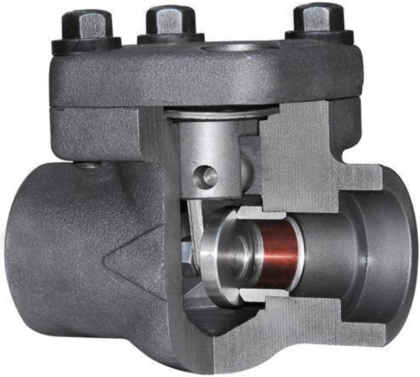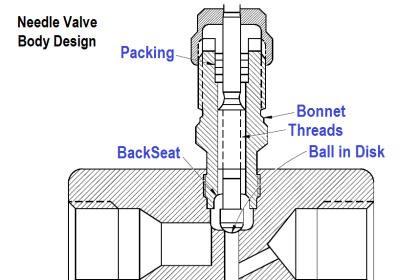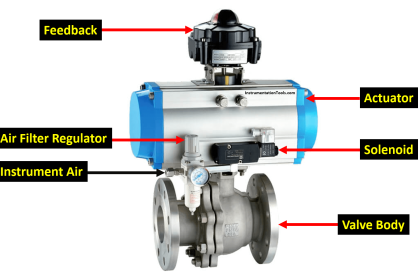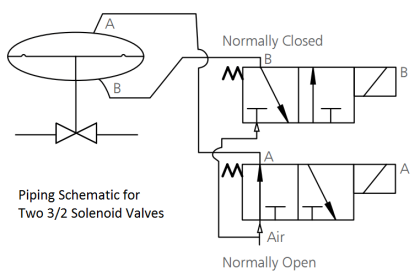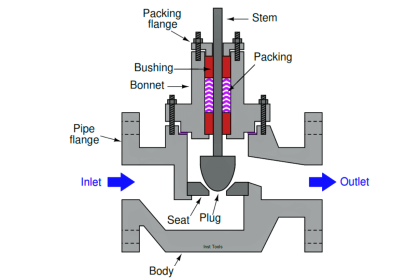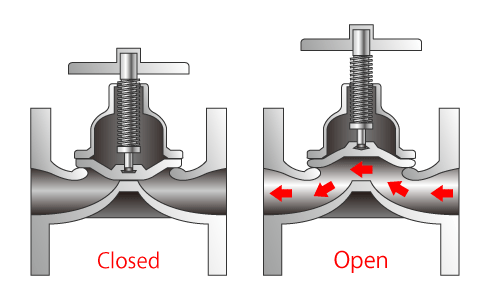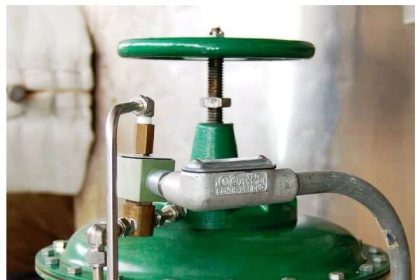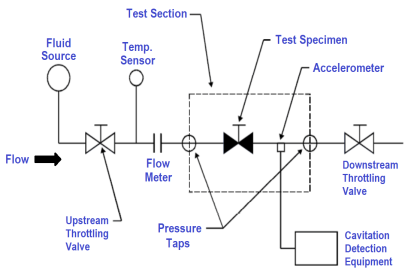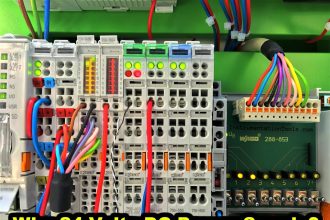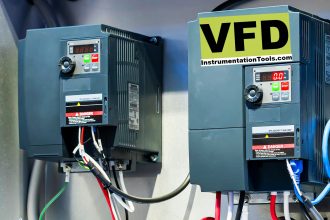Check valves are designed to prevent the reversal of flow in a piping system. These valves are activated by the flowing material in the pipeline.
The pressure of the fluid passing through the system opens the valve, while any reversal of flow will close the valve.
Closure is accomplished by the weight of the check mechanism, by back pressure, by a spring, or by a combination of these means. The general types of check valves are swing, tilting-disk, piston, butterfly, and stop.
Piston Check Valve
A piston check valve is essentially a lift check valve. It has a dash-pot consisting of a piston and cylinder that provides a cushioning effect during operation.
Because of the similarity in design to lift check valves, the flow characteristics through a piston check valve are essentially the same as through a lift check valve.
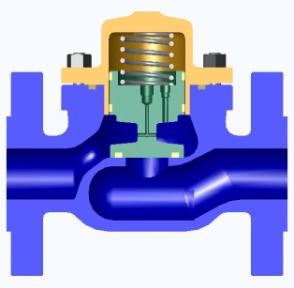
Image Courtesy : ghusvalve
Installation is the same as for a lift check in that the flow must enter from under the seat.
Construction of the seat and disk of a piston check valve is the same as for lift check valves.

Figure : Piston Check Valve
Piston check valves are used primarily in conjunction with globe and angle valves in piping systems experiencing very frequent changes in flow direction.
Valves of this type are used on water, steam, and air systems.
